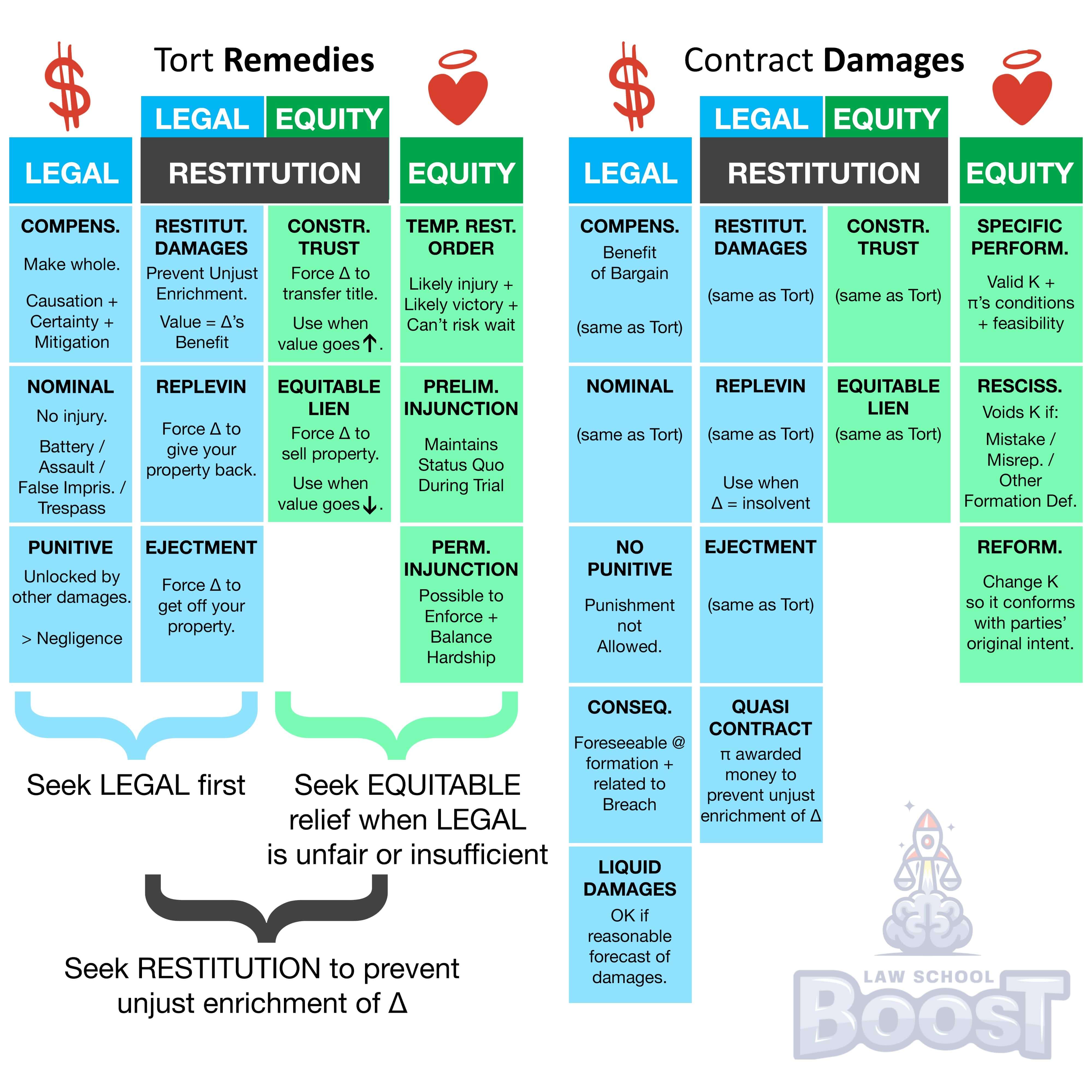🏥
Remedies • Contract - Restitutionary Remedies
REM#049
Legal Definition
If the plaintiff is the non-breaching party, they can recover the value of the benefit conferred—even if the recovery is greater than the contract rate—or they can seek to recover the specific piece of property if it is unique or the defendant is insolvent.
Plain English Explanation
When two people make a deal (a contract), and one person doesn't follow through on their end (breaches the contract), the other person (the one who did their part) can ask for compensation. This compensation can be either:
The value of what they gave or did, even if it's more than what was agreed upon in the contract.
The actual item they were supposed to get, especially if it's one-of-a-kind or if the person who broke the deal is broke (insolvent).
The purpose of this rule is to make sure the person who kept their end of the deal is fairly compensated. It exists to encourage people to stick to their agreements and to provide a remedy if they don't.
The value of what they gave or did, even if it's more than what was agreed upon in the contract.
The actual item they were supposed to get, especially if it's one-of-a-kind or if the person who broke the deal is broke (insolvent).
The purpose of this rule is to make sure the person who kept their end of the deal is fairly compensated. It exists to encourage people to stick to their agreements and to provide a remedy if they don't.
Hypothetical
Hypo 1: Bob agrees to sell a rare painting to Sam for $10,000, but after Sam pays, Bob decides not to deliver the painting. Sam sues Bob to either get his money back or the painting. Result: Since the painting is unique, Sam can ask the court to order Bob to give him the painting back. If Bob is insolvent, Sam has an even stronger case to get the painting itself rather than just the money.
Hypo 2: Sam hires Bob to build custom furniture for his home, worth $5,000. Bob takes Sam’s money but doesn’t build the furniture. Sam sues Bob, and the court finds that the materials and design Sam provided were worth $7,000. Result: Sam can recover the $7,000 value of the benefit conferred, which is greater than what was initially agreed upon in the contract. Sam cannot force Bob to create the furniture since slavery is illegal.
Hypo 3: Bob agrees to sell Sam a one-of-a-kind vintage car for $50,000. Sam pays, but Bob changes his mind and doesn’t hand over the car. Sam sues to get the car back. Result: Because the car is unique, Sam can ask the court to order Bob to deliver the car to him, especially if Bob cannot return the $50,000 because he’s insolvent.
Hypo 2: Sam hires Bob to build custom furniture for his home, worth $5,000. Bob takes Sam’s money but doesn’t build the furniture. Sam sues Bob, and the court finds that the materials and design Sam provided were worth $7,000. Result: Sam can recover the $7,000 value of the benefit conferred, which is greater than what was initially agreed upon in the contract. Sam cannot force Bob to create the furniture since slavery is illegal.
Hypo 3: Bob agrees to sell Sam a one-of-a-kind vintage car for $50,000. Sam pays, but Bob changes his mind and doesn’t hand over the car. Sam sues to get the car back. Result: Because the car is unique, Sam can ask the court to order Bob to deliver the car to him, especially if Bob cannot return the $50,000 because he’s insolvent.
Visual Aids



